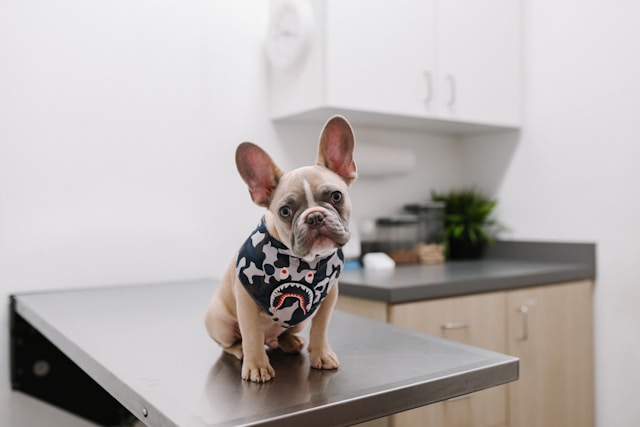Guarding Pets from Valentine's Day Chocolate Dangers

It's an occasion for expressing love to significant others and a celebration of our fondness for chocolates. Valentine's Day is synonymous with a profusion of chocolates, as the National Retail Federation's Valentine's Day Consumer Spending Survey predicts that 48% of Americans will gift candies on this special day.
Surveys have uncovered the nation's most beloved chocolates; interestingly, our pets also have a taste for them. However, chocolate can be hazardous to both dogs and cats. The good news is that we can avert such dangers by ensuring chocolates remain safely out of their reach.
The Top 8 Beloved Chocolates
Research firm SymphonyIRI surveyed to identify the nation's favorite chocolate treats. From the extensive list, they shortlisted the top ten chocolates:
-
M&Ms
-
Reese's Peanut Butter Cup
-
Snickers
-
Hershey's Milk Chocolate Bar
-
KitKat
-
Twix
-
3 Musketeers
-
Hershey's Cookies 'n' Creme
-
Milky Way
-
Almond Joy
In 2019, retail analysts anticipated that Americans would spend over $20 billion on Valentine's Day. This surge in chocolate consumption on romantic occasions can increase the risk of chocolate toxicity in our pets.
Chocolate Toxicity and Its Implications for Pets
The effects of chocolate toxicity on pets are far from trivial; they can be life-threatening. Chocolate ingestion can lead to severe complications such as pancreatitis, seizures, heart arrhythmias, intense vomiting, and even death.
The danger of chocolate arises from its content of theobromine and caffeine, both of which are methylxanthine compounds. These compounds can be lethal to dogs and cats, primarily because our pets metabolize them differently from humans. Moreover, the high fat and sugar content in chocolate can trigger pancreatitis, another life-threatening condition.
It is essential to note that the toxicity level varies with the type of chocolate. Dark chocolate contains significantly higher theobromine content than milk chocolate, with dark chocolate having 130-450 mg of theobromine per ounce, while milk chocolate contains 44-58 mg per ounce.
Recognizing Chocolate Toxicity Symptoms
Common symptoms of chocolate toxicity in pets include nausea, vomiting, diarrhea, increased urination, cardiac arrhythmias, seizures, and cardiac arrest.
The Pet Poison Helpline, a 24/7 animal poison control center, reports that dogs are more likely to ingest chocolate, accounting for most of their poisoning cases. Although cats cannot taste sweetness, they may occasionally indulge in chocolate and are susceptible to the same symptoms as dogs.
It is crucial to understand that chocolate toxicity can persist for up to 72 hours, emphasizing the importance of seeking veterinary care, especially within the first two hours of suspected chocolate ingestion. Under the guidance of a veterinarian, induced vomiting can significantly increase the chances of saving your pet's life.
Preventing Pet Poisoning
Aside from the mentioned eight favorite chocolates, other chocolate brands pose an equivalent threat to pets. To ensure a sweet and safe Valentine's Day, take the following preventive measures:
-
Store any type of chocolate out of your pet's reach, especially when dogs and cats can access countertops or graze at nose level.
-
Safely tuck chocolates away in the microwave or refrigerator, where pets cannot accidentally find them.
By adopting these safety measures, you can help safeguard your furry friends from the hazards of chocolate ingestion during the Valentine's Day festivities.
What to Do if Your Dog Eats Chocolate
If your dog has consumed chocolate, it is crucial to take immediate action, as urgent treatment may be necessary. Here are the steps to follow:
-
Contact a 24/7 Pet Poison Helpline or Your Veterinarian: It is strongly advised to contact a 24/7 Pet Poison Helpline or reach out to your veterinarian without delay. Provide them with essential details, including your dog's weight, the type of chocolate ingested, the amount consumed, and the time of ingestion. This information will help determine if your dog ingested a toxic dose and enable them to offer guidance on potential at-home care.
-
Quick Response is Vital: Dogs often consume chocolate during celebratory holidays, and your regular vet may not be available. This underscores the importance of 24/7 telehealth visits for pets, ensuring prompt access to professional advice.
-
At-Home Care: Depending on the circumstances and professional advice, at-home care for chocolate poisoning may involve inducing vomiting, administering multiple doses of activated charcoal (usually one to five grams per kilogram of your dog's weight) for decontamination, and providing sedatives to calm your dog.
-
Immediate Veterinary Attention: Regardless of the initial steps taken, contact your vet as soon as possible. The duration since ingestion and other factors may necessitate an immediate vet visit.
How Much Chocolate Can Be Fatal for a Dog?
The toxicity of chocolate varies based on your dog's weight. Even a small quantity can be dangerous. For instance:
A Labrador weighing 65 lbs (30kg) could be fatally affected by as little as 3g of theobromine.
This amount of theobromine is found in one 500-gram bar of dark chocolate or 170 grams of baking chocolate, often less than a single bar.
However, smaller dogs like West Highland Terriers weighing just 20 lbs (9 kg) should be reduced by two-thirds.
⚠️ It's important to remember that early treatment is more cost-effective, less invasive and generally leads to a better prognosis. Delaying treatment until clinical signs appear can result in a more expensive veterinary visit and a less favorable outcome for your dog.
Get insurance plans with wide-ranging coverage options













